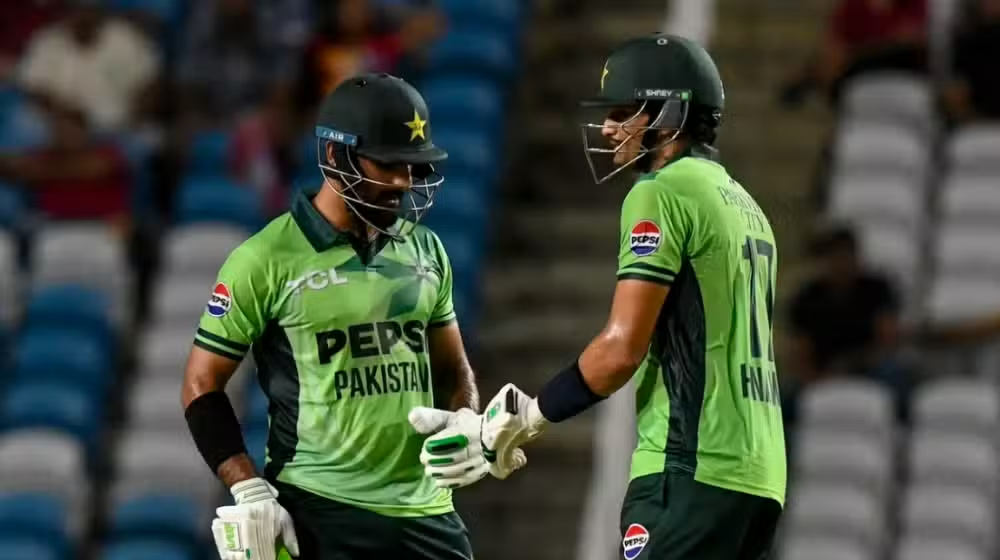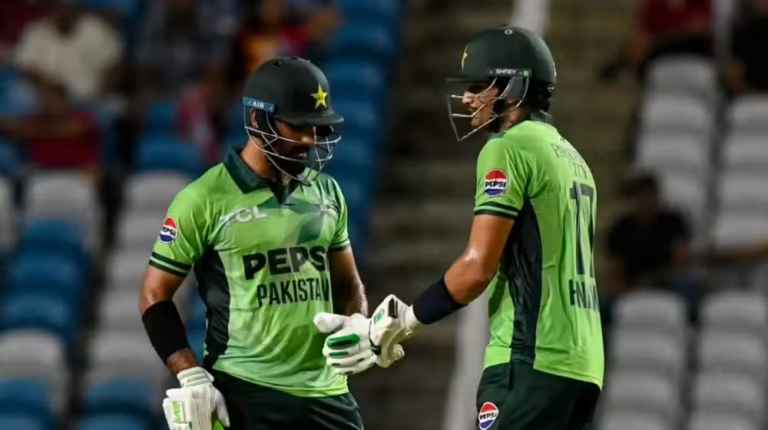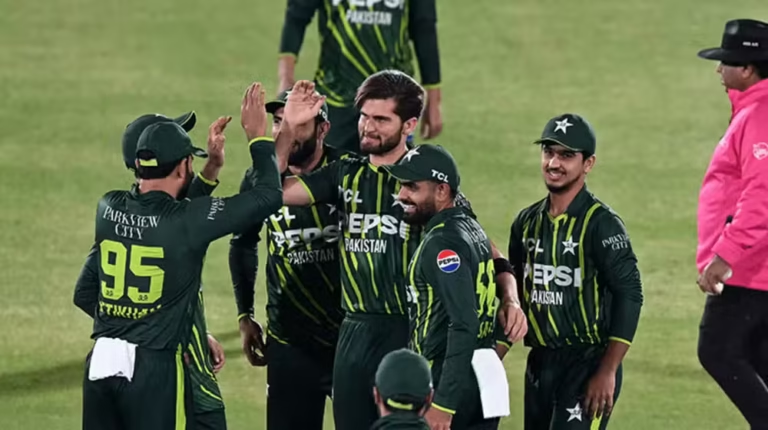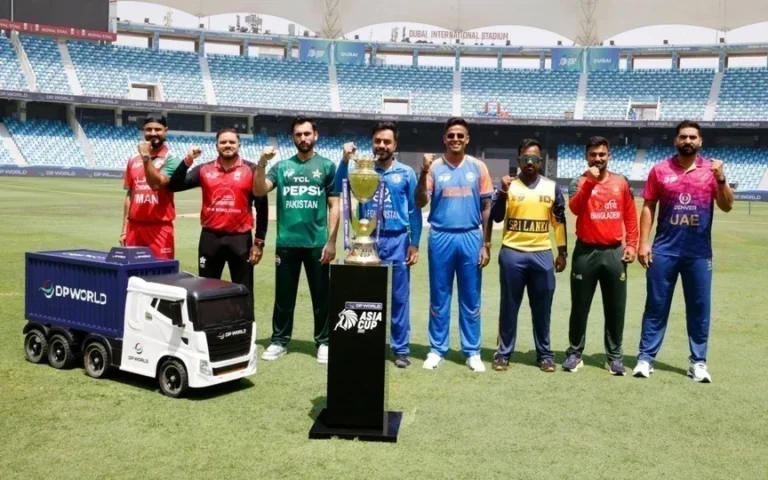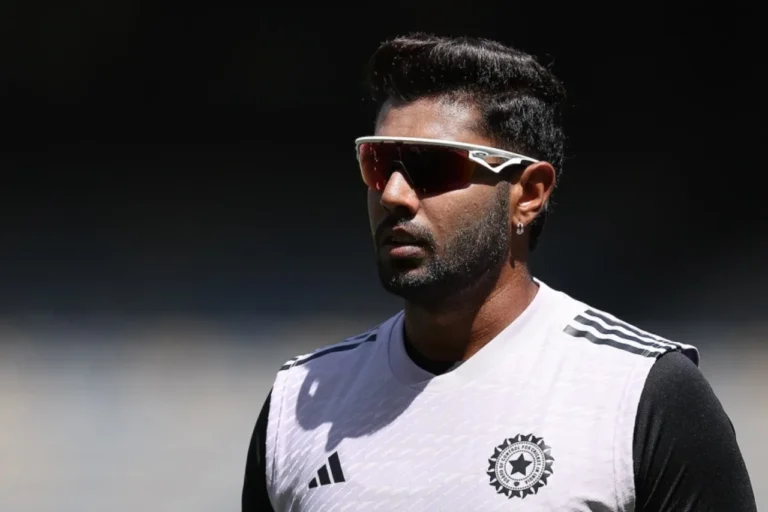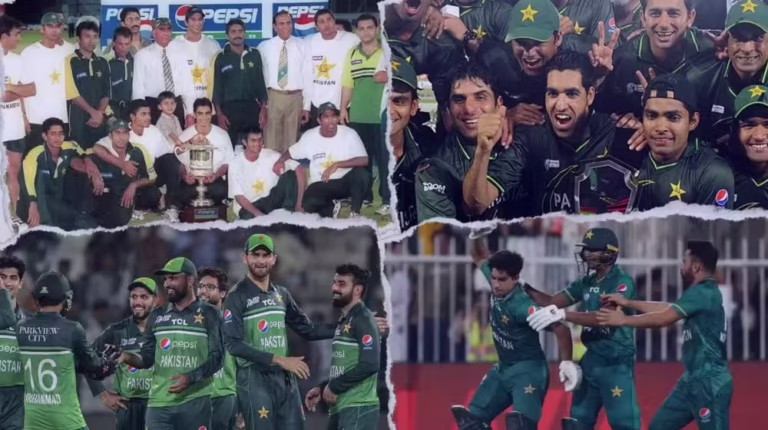- India’s edge in fitness: Long, grueling sessions show they’re preparing for endurance battles.
- Pakistan’s tactical edge: Spin rehearsals are smart given their group-stage opponents.
- Wicketkeeper debate alive: Jitesh vs Samson remains unresolved, though Jitesh has early momentum.
- Fans already engaged: The overlap itself has spiked social buzz, setting the stage for record-breaking viewership.
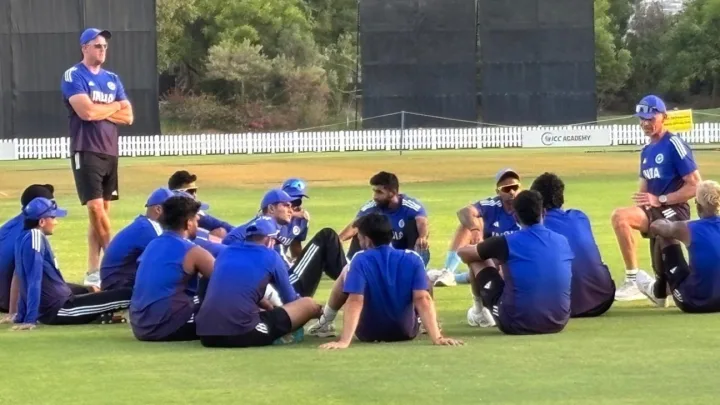
India, Pakistan Training Sets the Tone for Asia Cup 2025
India, Pakistan training routines in Dubai have already stolen the spotlight ahead of the Asia Cup 2025. Even before a ball is bowled, the buzz around both teams practicing at the ICC Academy has added spice to the rivalry. Fans expected crossovers, handshakes, or light banter, but instead, they witnessed two teams working in silos—focused, intense, and determined to perfect their plans.
The overlap in their training schedules created a buzz that felt like a prelude to the drama awaiting on the field. With both squads entering the tournament under pressure to deliver, these early signals from training sessions offer intriguing insights into team dynamics, strategies, and possible selections.
India’s Training Session: Structure, Strategy, and Stamina
Focus on Conditioning and Fitness
India’s training kicked off with a demanding bronco drill—cones placed at 20, 40, and 60 metres tested the squad’s endurance. Trainer Adrian Le Roux directed the exercise, Sitanshu Kotak kept the scores, and Gautam Gambhir cheered the players on like a true motivator.
The aim wasn’t about results but preparing the team for real-match conditions in the unforgiving UAE heat. This showed India’s intent: simulate adversity early so players can handle the pressure on game day.
Batting Combinations on Display
Once the fitness drills ended, attention turned to batting. Each specialist batter spent significant time in the middle. The order gave hints of possible combinations:
- Abhishek Sharma, Shubman Gill, Tilak Varma opened proceedings.
- Suryakumar Yadav, Rinku Singh, and Jitesh Sharma followed.
- Allrounders Hardik Pandya and Shivam Dube provided late acceleration.
This structure suggests India is seriously considering youth-power at the top mixed with explosive middle-order hitters.
The Jitesh vs Samson Debate
One of the most intriguing battles in India’s training was the wicketkeeper slot.
- Jitesh Sharma had longer batting sessions under Gautam Gambhir’s watch. He even received tactical feedback on shot selection, particularly against spin and scoop attempts.
- Sanju Samson, meanwhile, started with throwdowns and came late into the nets. But when he did, his raw power was evident. Pulls, flat-bats, and towering sixes echoed into Pakistan’s training area nearby.
At this stage, Jitesh seems to have a slight edge, but Samson’s late flourish ensured the debate is far from over.
Pakistan’s Preparation: Tactical and Targeted
Training in Isolation
While India embraced intensity in the open, Pakistan quietly went about their session in a secluded corner. Their drills were designed around surfaces with turn, bite, and uneven bounce, preparing specifically for Afghanistan’s spin trio—Rashid Khan, Noor Ahmad, and AM Ghazanfar.
This was tactical rehearsal rather than mere practice, signaling Pakistan’s meticulous approach to the Asia Cup.
Focus on Key Players
- Shaheen Shah Afridi did light fielding drills and catching practice.
- Haris Rauf put in fitness laps, building stamina ahead of high-speed spells.
- Batters concentrated on countering spin, which will be pivotal against Afghanistan and later India.
Pakistan’s camp may not have been as flashy as India’s, but it was precise, strategic, and laser-focused.
ICC Academy: The Perfect Battleground Before the Asia Cup
The ICC Academy in Dubai played a starring role in this training overlap. With 40 different practice surfaces—ranging from subcontinental turners to WACA-like bounce—the Academy is a dreamland for preparation.
Over the last few days, not just India and Pakistan but also teams like Oman and Hong Kong trained here. Having multiple teams crisscrossing training slots added to the atmosphere of a global festival.
India, Pakistan Training Overlap: Why Fans Are Excited
The Rivalry Beyond Matches
Whenever India and Pakistan training schedules overlap, curiosity skyrockets. Fans were glued to the possibility of an interaction—whether it was a smile, a handshake, or even a playful banter between stars. None of that happened, but the very absence of it fueled the anticipation.
The overlap hinted at a silent contest. Both teams seemed to be making statements: we’re here to prepare, not to fraternize.
A Mental Game as Much as Physical
Sports psychology tells us that body language during training often carries into matches. By avoiding interaction, both India and Pakistan may be building a psychological wall—a way of saying, the only place we’ll engage is under match lights.
Comparative Look: India vs Pakistan Training Highlights
| Aspect | India’s Training | Pakistan’s Training |
|---|---|---|
| Focus | Fitness drills, long batting sessions | Spin-focused batting prep |
| Key Players in Spotlight | Jitesh Sharma, Sanju Samson | Shaheen Afridi, Haris Rauf |
| Coaching Approach | Gambhir active, motivating, tactical feedback | Secluded, tactical, focused on opponents |
| Surfaces Used | Mix of local spinners, seamers, and pace throwdowns | Uneven, turning pitches simulating Afghanistan |
| Atmosphere | High-energy, long sessions, open intensity | Quiet, secluded, strategic focus |
This table illustrates that while India opted for intensity and conditioning, Pakistan emphasized tactical rehearsal against specific opponents.
The Wicketkeeper Battle: Jitesh vs Samson in Asia Cup 2025
Few debates in Indian cricket stir as much discussion as the choice between Jitesh Sharma and Sanju Samson.
- Jitesh Sharma: Aggressive, 360-degree shots, willing to improvise. He fits the template of a modern T20 finisher. His extended stint in nets suggests the management values his fearless approach.
- Sanju Samson: Proven IPL performer, explosive striker of the ball, capable of single-handedly winning matches. His power-hitting late in the nets reminded everyone of his raw ability.
This battle isn’t just about form; it’s also about team balance. India needs a keeper who can accelerate in the middle overs without fear. That’s why Jitesh may hold an edge. But Samson’s experience and flair mean the final call will be hotly debated until the toss.
India’s Young Guns and Range Hitters
Another theme from India’s session was range-hitting drills. Hardik Pandya and Shivam Dube cleared boundaries with ease, while Rinku Singh and Suryakumar Yadav showcased their unorthodox hitting.
This was not traditional net practice; it was a deliberate attempt to prepare for death overs hitting. Expect India’s strategy to rely heavily on explosive acceleration in the final five overs.
Pakistan’s Spin Preparation: A Smart Move
By training on surfaces with bite and uneven bounce, Pakistan signaled their priority: counter spin. Against Afghanistan in Sharjah, this will be crucial. But it also doubles as preparation against India’s spinners—Kuldeep Yadav and Varun Chakravarthy.
Practicing on difficult surfaces builds confidence. If Pakistan’s batters can survive Rashid Khan in Sharjah, they’ll be more than ready for India in Dubai.
Why This Overlap Matters for the Asia Cup 2025
The India-Pakistan clash is always the marquee event of the Asia Cup. But the training overlap in Dubai created a subplot before the match itself.
- For fans, it adds drama and storytelling.
- For analysts, it offers hints of team strategies.
- For players, it’s a reminder that every move is under the spotlight.
The absence of interaction—no smiles, no chats—may even intensify the competitive fire.
A Silent Prelude to the Showdown
The sight of India and Pakistan training side by side in Dubai without exchanging a word is the perfect prelude to the Asia Cup 2025. Two teams, two approaches, one massive stage.
India focused on intensity, fitness, and explosive batting drills. Pakistan quietly rehearsed counter-spin strategies, conserving energy for the real battle. Neither gave an inch, even in practice.
As the tournament begins, these training patterns may shape match outcomes. But beyond tactics, the overlap proved one thing: when India and Pakistan share a field—even for practice—the world watches, waits, and wonders what will happen next.

